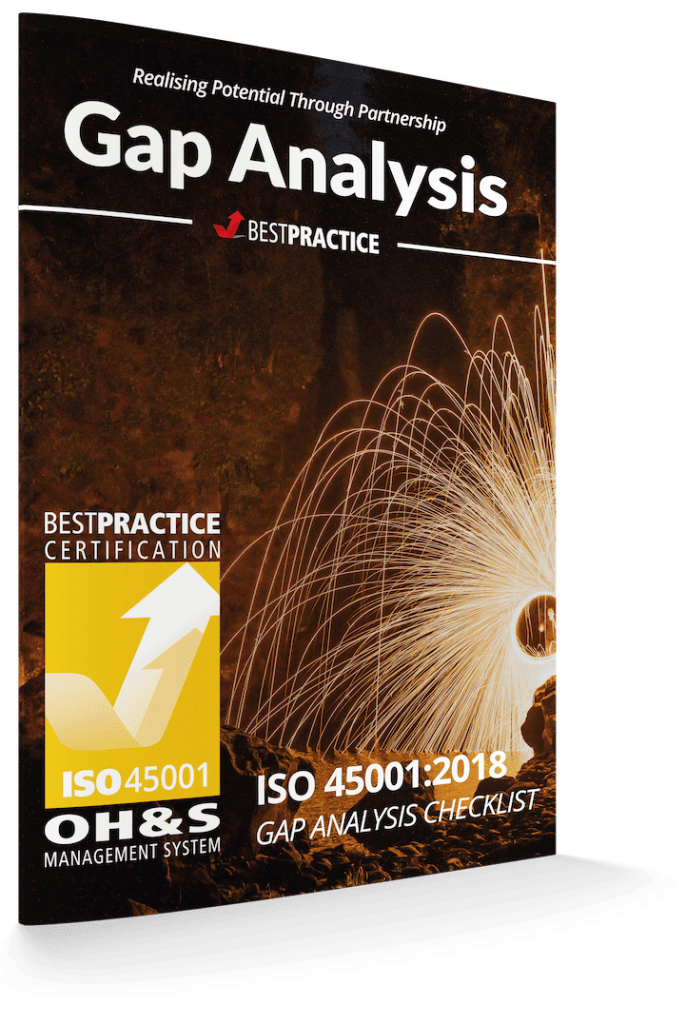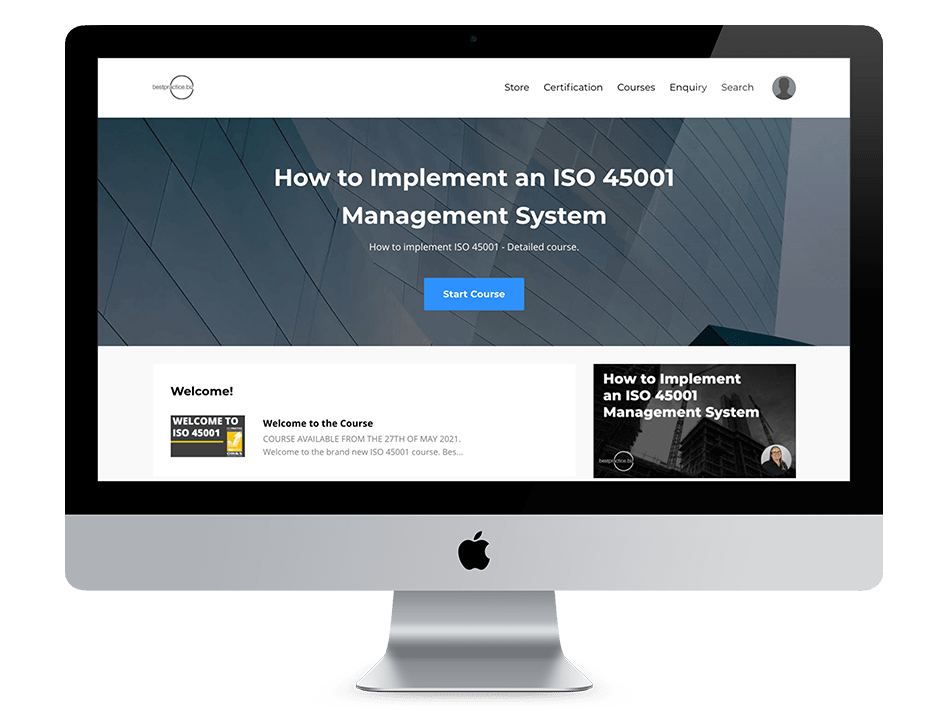ISO 45001 Certification
ISO 45001:2018 Safety Management
System
ISO 45001 is an internationally recognised management standard designed to optimise your organisation’s Occupational Health & Safety systems. In the process of being certified, your organisation will address injury and ill health risks in your operations and adopt a health and safety management system that makes its way from senior management across the board in your operations.
Best Practice is a JAS-ANZ accredited certification body that is able to provide your organisation with either online or in-house certification to the standard for occupational health, and has a range of support measures to get you certified.
ISO 45001 Certification Quote
BPC_Main_Form
How Do You Get Certified To ISO 45001?
STEP 1
Optional Gap Analysis
Performed by Best Practice, we evaluate your management system to each clause of the relevant standard. This will identify the level of compliance that your existing management system has.
Best Practice provides an assessment report outlining any faults in your management system that needs to be addressed prior to certification.
STEP 2
Stage 1 Assessment
The evaluation of your management system documentation, including policies, processes, management review records, scope and context as well as system implementation.
This sets the foundation for the stage two assessment.
STEP 3
Stage 2 Assessment
Best Practice needs to verify that the documented requirements of the standard are implemented across your business.
During an E-Audit an assessor will remotely partake in discussions with relevant individuals in your business.
Your management system is assessed and verified as being implemented.
STEP 4
Certification
Once your stage two assessment is verified and the process is complete, a 'Statement of Certification' is issued, confirming compliance with the relevant standard.
This certification is valid for a three-year period from the date of issue.
Regular surveillance assessments will be performed at a minimum of once every 12 months to maintain your certification.
How Do You Get Certified To ISO 45001?
STEP 1
Optional Gap Analysis
Performed by Best Practice, we evaluate your management system to each clause of the relevant standard. This will identify the level of compliance that your existing management system has.
Best Practice provides an assessment report outlining any faults in your management system that needs to be addressed prior to certification.
STEP 2
Stage 1 Assessment
The evaluation of your management system documentation, including policies, processes, management review records, scope and context as well as system implementation.
This sets the foundation for the stage two assessment.
STEP 3
Stage 2 Assessment
Best Practice needs to verify that the documented requirements of the standard are implemented across your business.
During an E-Audit an assessor will remotely partake in discussions with relevant individuals in your business.
Your management system is assessed and verified as being implemented.
STEP 4
Certification
Once your stage two assessment is verified and the process is complete, a 'Statement of Certification' is issued, confirming compliance with the relevant standard.
This certification is valid for a three-year period from the date of issue.
Regular surveillance assessments will be performed at a minimum of once every 12 months to maintain your certification.
What Is ISO 45001?
The 45001 Standard is a relatively new standard, released in March 2018, and has been compiled with a high level structure that governs the monitoring of work related injuries and advocates for internal and external policies that result in improved safety and OH&S performance. ISO 45001 replaced the outgoing OHSAS 18001 – Occupational Health and Safety System. It’s one of the leading international standards for workplace health and safety around the globe.
This standard outlines the safety management systems requirements for your organization to develop. It shows interested parties and stakeholders your organization is committed to the safety of workers and providing a safe work environment. It is an important sign of your business’ capability to reduce costs through preventing workplace injury and illness, and requires top management to display evidence of your attempt to mitigate OH&S risks.
What Our Clients Say
Why is ISO 45001:2018 Certification Important?
Certification to a Safety OH&S standard shows to all relevant stakeholders that your organisation is committed to implementing occupational health and safety management strategies that help your organisation become a safer, more streamlined and potentially profitable one as you move into the future.
As an employer, you have an obligation to keep both your staff and customers safe. ISO health and safety management systems have been designed to be fitted to your internal and external operations to ensure you can maintain business continuity while ensuring OH&S risks and the potential of work related injuries is being directly addressed with an internal audit.
This is done through the implementation of key parts of the management system standard directed at mitigating OH&S risks across your operations, and ensure that you’re actively addressing the potential of work related injuries and improving safety. With a high level structure, it asks you to analyse your internal and external operations for areas of OH&S-related risks that need to be addressed. Through the process of being certified, you can demonstrate the risks and opportunities that you’ve identified that will contribute to an overall higher level of improved safety in your organisation.
What Are The Benefits Of Being ISO 45001 Certified?
Being certified shows key stakeholders that you have been externally verified as having a system that meets the minimum requirements. It allows your stakeholders to trust your organization and its ability to manage occupational health and safety, and reduce OH&S risks, and therefore reduce workplace related injury or illness. Effective health and safety management is at the core of successful organisations that have adopted the OH&S management principles of the ISO family of standards such as ISO 45001, and with improved safety reduced risks of injury and ill health, it can also make your organisation more profitable.
A Safety Management System provides numerous benefits and opportunities, including:

What Does It Mean To Be ISO 45001 Certified?
You can show key stakeholders that you have met the requirements set out in ISO 45001:2018, and that you have systems in place to mitigate risks and build confidence in your commitment to health and safety management. This is only possible with a pledge from senior management that the organisation is on its way to implementing a series of policies that curb work related injuries and improve the overall standing of occupational health and safety in your operations. Being accredited to a leading international standard for occupational health and safety acts to further legitimise your organisation’s reputation.
This standard shows you are actively working to reduce risks that exist in the workplace, and therefore reduce workplace related injury and illness in safe and healthy workplaces. This can provide significant cost savings as you can reduce employee sick leave, compensation and insurance. It’s one of the most significant management system standards designed to address OH&S risks in your operations and ensure that risks and opportunities to curb work related injuries are directly addressed by senior management.
What Are The Requirements Of ISO 45001?
ISO 45001:2018 is the standard that outlines the OH&S requirements that need to be met to become certified. These requirements are broken down into clauses that provide the framework for your management system.
The clauses are Context of the Organization (clause 4), Leadership (clause 5), Planning (clause 6), Support (clause 7), Operation (clause 8), Performance Evaluation (clause 9) and Improvement (clause 10).
It follows the new structure of ISO standards, Annex SL, which means they work alongside the ISO family of management standards like 9001, 14001 and 27001. The requirements are to identify the risks and have a business plan for OH&S.
ISO 45001 Resources
Why Choose Best Practice?
✔ Passionate. Best Practice exists to inspire customer confidence in your business. We’re passionate about improving organisations by making them efficient, fun, profitable, safe and environmentally friendly.
✔ Growth Focused. We help make your company a more attractive prospect to buy from, work at or invest in. As a result, this is embedded in everything we do to support you.
✔ Supportive. Our experienced team will be with you every step of the way. We partner with growth-focused organisations to provide support pre certification and support you once you achieve ISO 45001 certification.
✔ Progressive. We’re not like other certification bodies; we want to genuinely add value to your organisation, not just tick a box. We provide in-depth and practical support from an experienced team that will allow you to grow beyond certification.
✔ Free Training. We provide world-class online ISO training for your whole organisation, including weekly webinars, podcasts, industry newsletters and business.
ISO 45001 Certification Quote
BPC_Main_Form
Frequently Asked Questions
Your system has to meet the minimum requirements before you can be certified. Here, we outline the steps to creating your Occupational Health and Safety Management System for certification.
- Understand the intent of the standard. Read through the standard and familiarise yourself with the terminology.
- Understand the requirements set out in the standard. Develop your management system according to the standard.
- Perform a gap analysis to identify how ready you are to become certified. This will highlight any areas that need further development. Have a look at our ISO 45001 PDF Gap Analysis Checklist here.
- Undergo the process of Certification. We will need to evaluate your organization to ensure you are compliant to the standard with a Best Practice Assessment. Find more information on the process here.
The certification process has four steps.
- Gap Analysis (optional): The process begins with an optional gap analysis to evaluate your OH&S system against each clause of the standard.
- Stage One: The mandatory first step is an assessment of your management system documentation to evaluate it against the standard, including policies, processes, management review records, scope and context. It sets the basis for Stage Two.
- Stage Two: Stage two assessment is the final step of the initial certification process. To achieve certification, we need to check that the documented requirements of the standard are implemented across the business. We visit your offices and sites, as well as discuss your system with relevant people in your business.
- Certification: Once your stage two assessment is verified and the process is complete, a ‘Statement of Certification’ is issued, confirming compliance with the relevant standard. This certification is valid for a three-year period from the date of issue.
Surveillance assessments will need to be performed on a regular basis to maintain your certification.
Contact us with any questions you may have, or to find out more about the certification process.
ISO 45001 is the new internationally recognized Occupational Health & Safety standard. It’s newly released and will replace AS/NZS 4801 and OHSAS 18001, as these standards from Australia will be withdrawn over the next few years.
This standard outlines the requirements of an OH&S management system to ensure worker safety and provide a safe work environment. They are influential indicators that an organization has measures in place to reduce workplace injury and illness.
The durations for implementing ISO 45001 will vary from company to company based on the variability of the appetite for change, the level of buy-in and the positive culture.
However, company size is a big influence. Some standard practices are:
- Small organizations – up to 150 staff – 3-6 months
- Medium organizations – up to 1000 staff – 8-12 months
- Large organizations – more than 1000 staff – 12-18 months
ISO 45001 is required to show customers, suppliers and stakeholders that you have identified, mitigated and controlled safety risks, and you are committed to providing a safe workplace.
To become certified, companies need to undergo evaluation against the standard and need to have ongoing surveillance audits to ensure ongoing compliance. Find out more about the certification process here.
ISO 45001 training can be used to understand the underlying meaning of the standard, so you can develop a Safety Management System that can then be audited and assessed against the standard. For more information on training, visit our Training Academy here.
You can transfer your current ISO 45001 certification to Best Practice seamlessly.
We will continue your current certification schedule, contact us for an obligation free quote.
Why Best Practice?
- We work to understand your business. We provide meaningful observations. It’s more than just compliance or non-conformance for us.
- We provide you with support services. We help grow and continually improve your business with training, webinars, YouTube videos and our industry magazine, Certified.
- We have no hidden fees. Our rates are all-inclusive and transparent. We don’t have any hidden reporting, travel or preparation fees.
Contact & Policies
- Our Locations
- Privacy Policy
- Legal Information
- +61 1300 402 602
- info@bestpractice.biz












